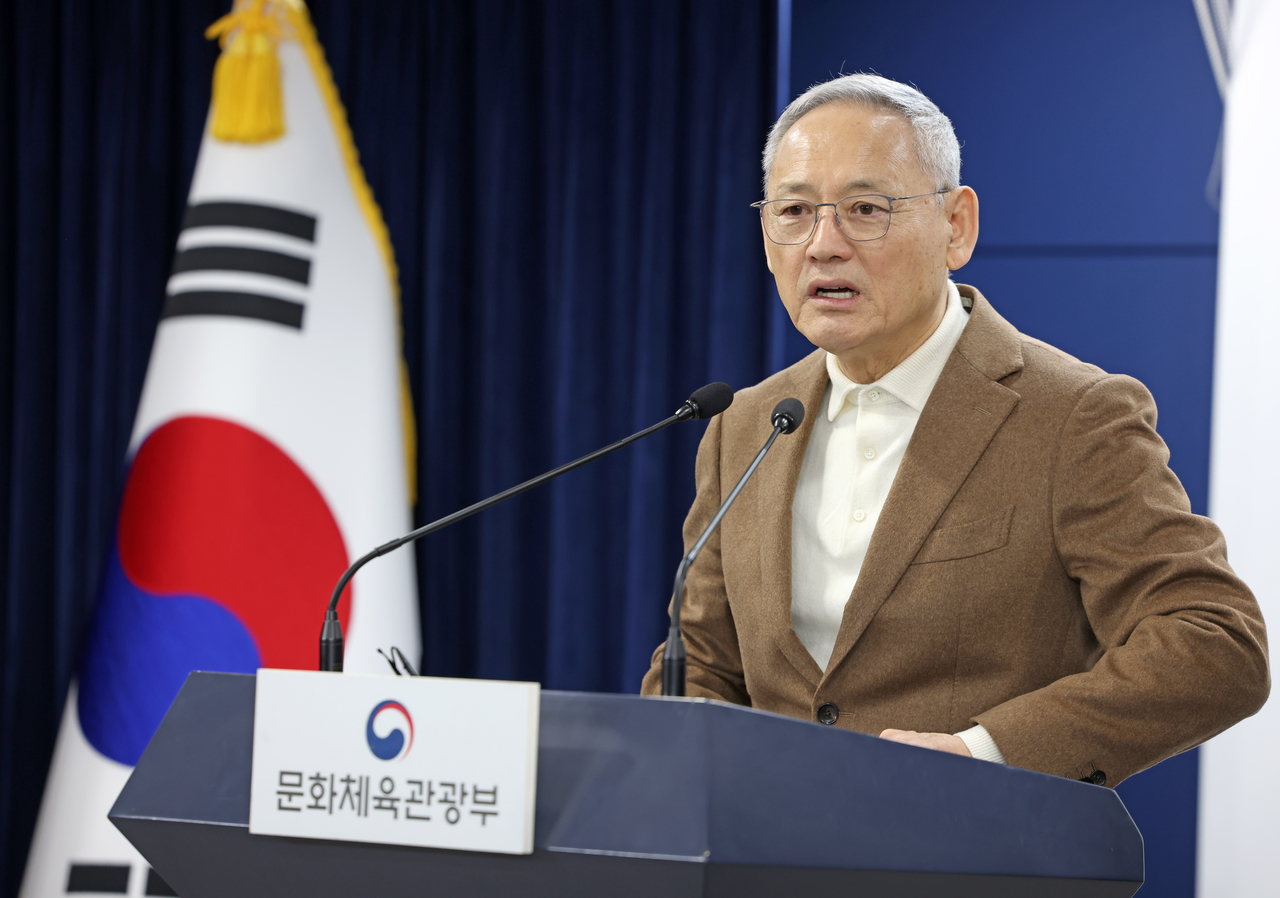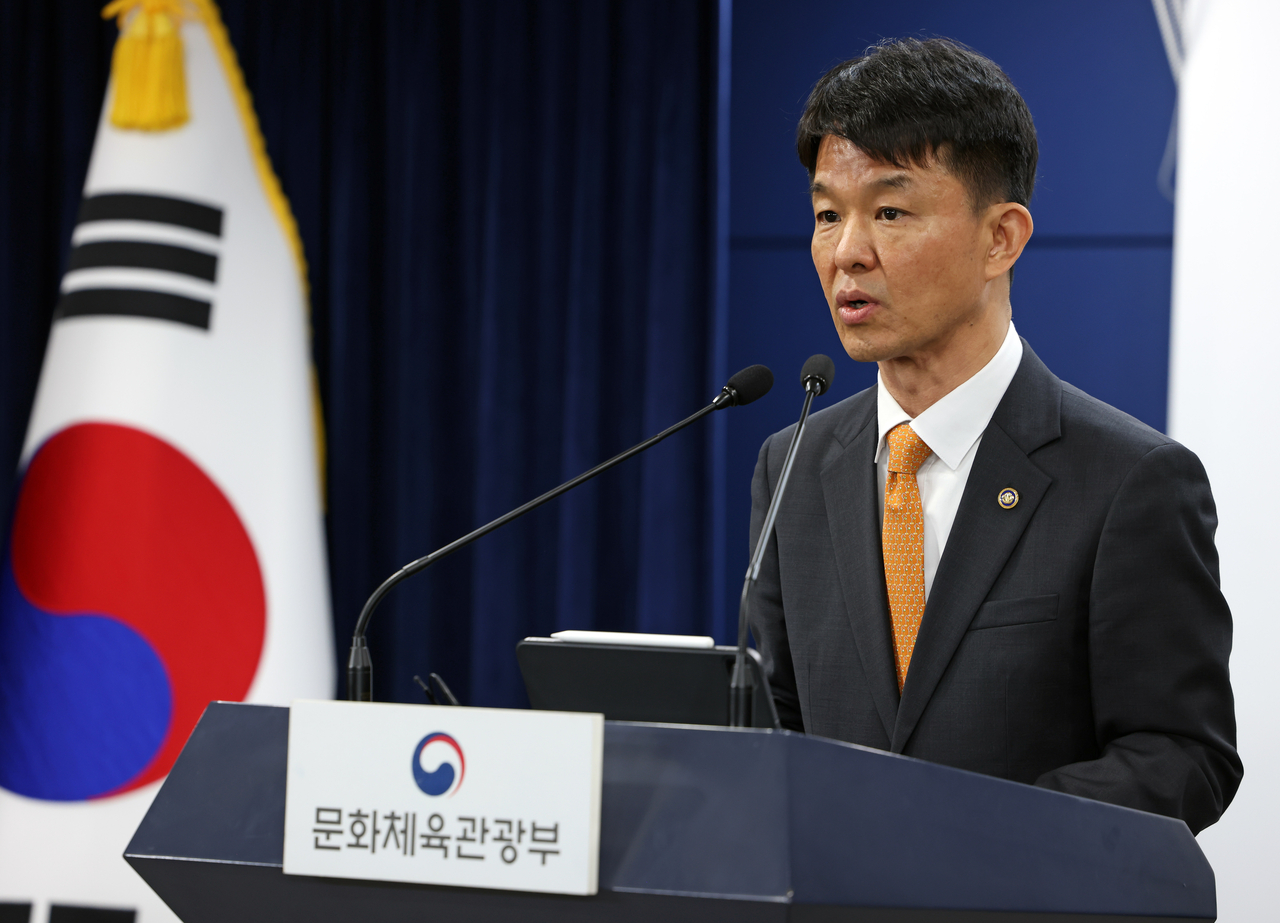Cultural initiatives to address regional imbalance, shrinking population, diversity

The Ministry of Culture, Sports and Tourism on Thursday unveiled a long-term plan called "Culture Korea 2035" that lays out guidelines for policies going forward.
The comprehensive plan with 30 key initiatives is aimed at responding to the rapidly changing environment, a shrinking and aging population and growing non-Korean demographics, the ministry said. Additionally, the ministry seeks ways to leverage Korean content to drive the country's economy while also vowing to utilize cutting-edge technology such as artificial intelligence and extended reality.
“It’s a complex time and we debated whether it is appropriate. However, members of the ministry arrived at a consensus for a long-term vision and joined forces in creating this vision. I hope there won’t be big changes (in the long-term vision),” Culture Minister Yu In-chon told reporters at a press conference Thursday.
"In response to these evolving demands and circumstances, we must reflect on what actions to take now to shape a future where the values of creativity and innovation, diversity and inclusivity, and openness and integration in culture extend beyond individuals to society, the economy, regions and the world," Yu said.
A key priority is achieving regional balance by strengthening cultural activities in underserved areas, according to the ministry. One proposed measure is relocating state arts companies outside of Seoul. The first step in this initiative will be the relocation of the Seoul Performing Arts Company to Gwangju next year, where it will become the resident art troupe of the National Asian Culture Center. This was a step back from an earlier position Wednesday when Yu told a session of the National Assembly Culture, Sports and Tourism Committee that SPAC would be moved to Gwangju within this year.
Additionally, four national youth arts organizations in four areas, including Korean dance, will be established outside of Seoul and operate in collaboration with local cultural institutions, in an effort to promote decentralization of cultural activities.
The relocation of public cultural institutions will be implemented step by step, the ministry said, taking into consideration factors such as facility construction, alignment with Korea's designated cultural cities, regional specialization strategies and benefits expected from relocation.
Through these initiatives, the ministry hopes to create a model where the central and regional governments can work together, involving regional governments in cultural activities and policies.
Despite stalled inter-Korean relations, the ministry also plans to review and create an archive of the past 35 years of cultural cooperation between the two Koreas.

The ministry's plan also aims to expand the content, tourism and sports industries.
In the content sector, which has become a key driver of Korea’s economic growth with exports reaching $13.34 billion in 2023, a series of large-scale projects will be launched to shape the next 30 years. These include the development of a K-content culture complex, a national video museum, a hall of fame for pop culture and arts, and a game complex, which the ministry hopes will double as major attractions for international tourists.
Additionally, the plan includes initiatives to boost inbound tourism, which is projected to reach 30 million visitors annually in the coming years. Measures include loosening accommodation regulations and enhancing tourism-related infrastructure to improve visitor experiences.
The ministry noted there is a need to expand leisure facilities nationwide and promote community sports, while considering the preferences and needs of policy beneficiaries, including children and older people.
The ministry also recognized South Korea's transition into a multicultural society, with 6.8 percent of the total population having immigrated to the country, and emphasized the need to incorporate cultural differences and diversity into policymaking.
Contrary to expectations, the plan did not include the administrative integration of five national arts groups, a proposal that sparked controversy after it was leaked last month.
Yu reaffirmed that the plan would be scrapped if opposition remains strong, but emphasized that the ministry would continue discussions with the organizations going forward.
gypark@heraldcorp.com






